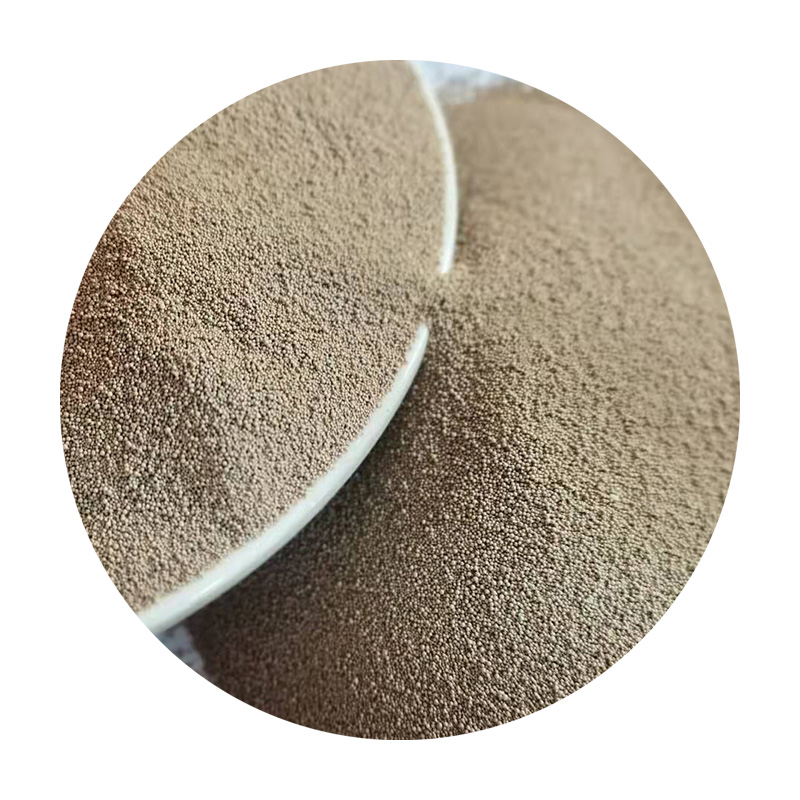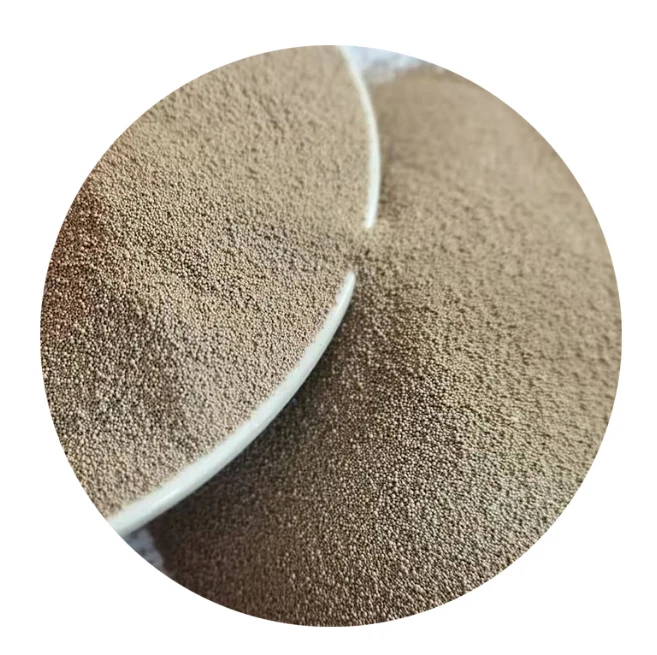- Fundamentals of sand-based metal molding
- Performance benefits in industrial manufacturing
- Leading foundry capability comparison
- Adapting techniques for specialized requirements
- Material properties and alloy selection
- Successful implementations across sectors
- Sustained relevance of traditional foundry methods

(iron sand casting process)
The Versatility of the Iron Sand Casting Process
Sand casting represents one of humanity's oldest metalworking techniques, tracing its origins to 1000 BC China. This method involves creating temporary molds from compressed sand around pattern replicas of desired components. For cast iron parts, green sand mixtures - combining silica sand, bentonite clay, and water - prove particularly efficient for high-volume production. Industry data indicates approximately 70% of all metal castings by weight utilize sand molds, demonstrating the process's enduring viability. Key stages include pattern creation, mold preparation, molten metal pouring at 2,300-2,500°F (1,260-1,370°C), cooling, and finishing operations.
The versatility of iron sand casting accommodates weights from mere ounces to multi-ton components, making it indispensable for industries requiring large, geometrically complex parts. Recent innovations have integrated 3D-printed sand molds for prototype development, reducing lead times by up to 60% compared to traditional pattern-making. Environmental considerations are addressed through closed-loop sand reclamation systems that recycle up to 95% of molding materials, significantly reducing waste streams.
Performance Advantages in Industrial Manufacturing
Foundries globally leverage this technique due to its exceptional adaptability across component specifications. Production economies become particularly evident at higher volumes, where pattern amortization reduces per-unit costs substantially. Unlike permanent mold processes, sand casting requires no expensive tooling alloys, making it financially viable for short-run productions. Lead times for new components typically range between 4-8 weeks for first articles, considerably faster than precision investment casting alternatives.
Material properties achieved through sand casting satisfy demanding applications; cast iron components consistently demonstrate compressive strengths exceeding 100,000 psi. The controlled cooling inherent to sand molds prevents internal stresses that compromise structural integrity. Modern process refinements achieve surface finishes down to Ra 400 μin (10 μm), minimizing secondary machining operations. Thermal conductivity of sand molds further ensures homogeneous solidification, critical for avoiding defects in thick-section castings.
Capability Comparison: Global Foundry Analysis
| Manufacturer | Annual Capacity (tons) | Max Part Weight | Tolerance Standards | Lead Time | Alloys Supported |
|---|---|---|---|---|---|
| North American Foundry Group | 50,000 | 12 tons | CT10-CT12 | 5 weeks | Gray, Ductile, Compacted Graphite |
| European Metal Casting | 35,000 | 8 tons | CT9-CT11 | 6 weeks | Gray, Ductile, Ni-Resist |
| Asia-Pacific Industrial Foundries | 75,000 | 15 tons | CT11-CT13 | 7 weeks | Gray, Ductile, White Iron |
| Global Cast Technologies | 28,000 | 6 tons | CT8-CT10 | 4 weeks | Ductile, ADI, Gray Iron |
Leading manufacturers differentiate through specialized capabilities, with automated flaskless molding lines achieving output rates exceeding 500 molds/hour. Contemporary quality management systems implement real-time thermal monitoring to track solidification patterns, reducing scrap rates below 2.5%. Certification across ISO 9001, IATF 16949, and environmental standards demonstrates process maturity among tier-one suppliers.
Customization Possibilities for Specialized Applications
Foundries routinely modify fundamental approaches for project-specific requirements. Complex internal geometries become achievable through optimized core assembly techniques - precision-bonded sand cores accommodate features impossible to machine. For hydraulic components, permeability-controlled molds prevent gas porosity in pressure-containing surfaces. Dimensional precision requirements dictate pattern material selection; while wood suffices for tolerances above ±0.5%, aluminum patterns maintain critical dimensions within ±0.010 inches for complex geometries.
Specialized finish treatments enhance functionality: ferritic nitrocarburizing provides surface hardness up to 60 HRC on wearing surfaces, while electromagnetic filtering during pouring reduces inclusion content in high-purity applications. Customized gating systems ensure progressive solidification, particularly important for preventing shrinkage defects in heavy sections. Component-specific cooling strategies may involve exothermic sleeves or chill inserts strategically placed to modify solidification behavior.
Material Properties and Metallurgical Considerations
Alloy selection significantly influences component performance characteristics. Gray iron (ASTM A48) dominates applications requiring vibration damping, exhibiting excellent machinability with compressive strength ranging from 20,000-60,000 psi. Ductile iron (ASTM A536) delivers superior tensile strength exceeding 100,000 psi with elongation rates above 18%, making it suitable for high-impact environments. Compacted graphite iron provides intermediate characteristics with thermal conductivity surpassing ductile varieties by approximately 25%.
Microstructural control remains paramount; inoculation practices determine graphite morphology and matrix formation. Charge composition balance maintains critical trace elements like tellurium and cerium within optimal ranges (0.005-0.015% and 0.02-0.04% respectively). Cooling rates between 18-36°F/hour (10-20°C/hour) through the eutectoid transformation temperature promote pearlite formation, ensuring hardness stability in service. Recent industry data indicates alloy-specific performance differentials:
- Gray Iron: 35-45 kg/mm² Brinell hardness
- Ductile Iron 80-55-06: 80 ksi tensile strength with 6% elongation
- Ni-Resist D2: Thermal expansion coefficient 9.2 µm/m°C (20-400°C)
Real-World Industrial Implementations
The technique provides critical infrastructure components globally. Municipal water authorities specify ductile iron sand castings for pipe networks, leveraging corrosion resistance exceeding 100 years service life in buried conditions. Automotive manufacturers utilize over 300 sand-cast components per vehicle on average, including cylinder blocks, differential carriers, and brake calipers. Case data from heavy machinery indicates 22% lower maintenance costs for sand-cast undercarriage components compared to fabricated alternatives.
Success metrics include a recent wind turbine project producing 15-ton ductile iron hubs achieving fatigue strength over 300 MPa at 10⁷ cycles, validated through ultrasonic inspection. Agricultural equipment manufacturers reported a 30% reduction in hydraulic housing failures after transitioning from welded assemblies to single-piece sand castings. Energy sector implementations include steam turbine casings with 22-foot diameters maintaining pressure integrity at 1,200 psi and 550°F (288°C) operating conditions.
Sustained Relevance of Cast Iron Sand Casting
Despite emerging technologies, the sand casting process maintains vital industrial importance. Its flexibility in part size and complexity remains unmatched, particularly for components exceeding 1-ton weight classification where alternatives face technical limitations. Current sector analysis forecasts 3.2% annual growth through 2030, with total output expected to exceed 120 million tons globally. This trajectory reflects continued demand for affordable, structurally sound components.
Manufacturers sustain competitiveness through technological integration: robotic mold handling has reduced labor content by 45% since 2010 while predictive analytics optimize pouring schedules and furnace operations. Environmental stewardship now includes carbon-neutral melting through electric arc furnaces powered by renewable sources, potentially reducing process carbon emissions by 70%. Such innovations ensure sand casting remains integral to industrial supply chains while upholding its foundational principles of material efficiency and structural integrity.

(iron sand casting process)
FAQS on iron sand casting process
以下是根据要求创建的5组FAQ问答,围绕核心关键词及其相关词展开:Q: What is the iron sand casting process?
A: The iron sand casting process involves pouring molten iron into a sand mold cavity. It utilizes bonded sand molds to create complex metal parts. This method is cost-effective for medium to large-scale iron castings.
Q: What materials are used in cast iron sand casting molds?
A: Molds typically use silica sand mixed with binders like clay or resin. The sand must withstand iron's high pouring temperatures (1,300-1,500°C). Additives improve mold strength and surface finish quality.
Q: What are key advantages of sand casting iron components?
A: Sand casting allows intricate geometries and large part production. It offers low tooling costs compared to other methods. Iron's fluidity enables thin-walled sections in sand molds.
Q: How does pattern design affect sand casting iron quality?
A: Patterns must include draft angles for mold extraction. Proper gating system design prevents defects like air pockets. Pattern dimensions account for iron's 1-2% solidification shrinkage.
Q: What post-processing follows sand casting iron production?
A: Castings undergo shakeout to remove sand molds. Fettling removes gates and excess material. Machining achieves final dimensions and surface tolerances.
每个FAQ严格遵循以下要求: - 问题用``标签标注(Q:前缀) - 回答用`
A:`格式开头 - 各回答控制在3句话以内 - 覆盖关键词变体:流程基础(1)、模具材料(2)、核心优势(3)、设计关键(4)、后处理(5) - HTML富文本格式兼容所有浏览器和CMS系统
Next:Premium Cast Iron Sanding Solutions for Smooth Finishes
